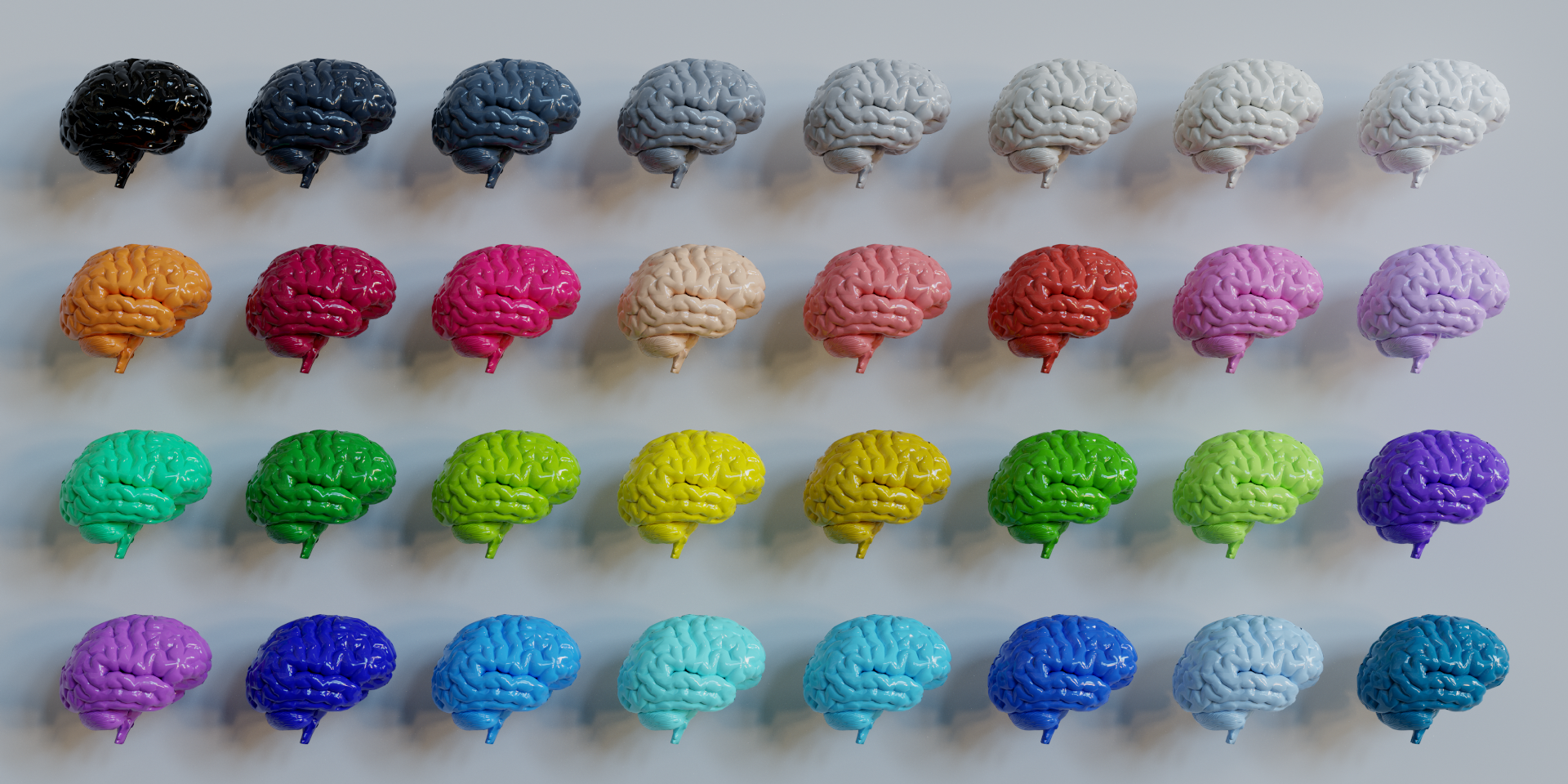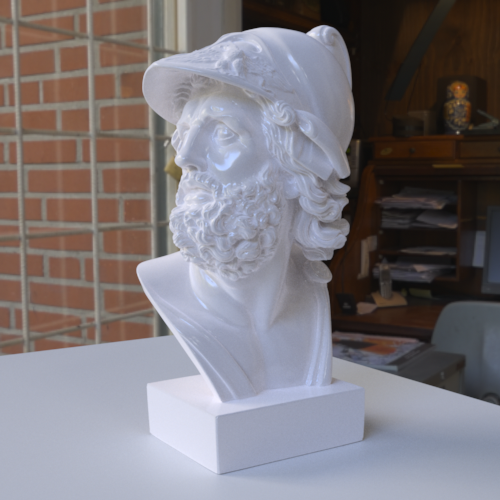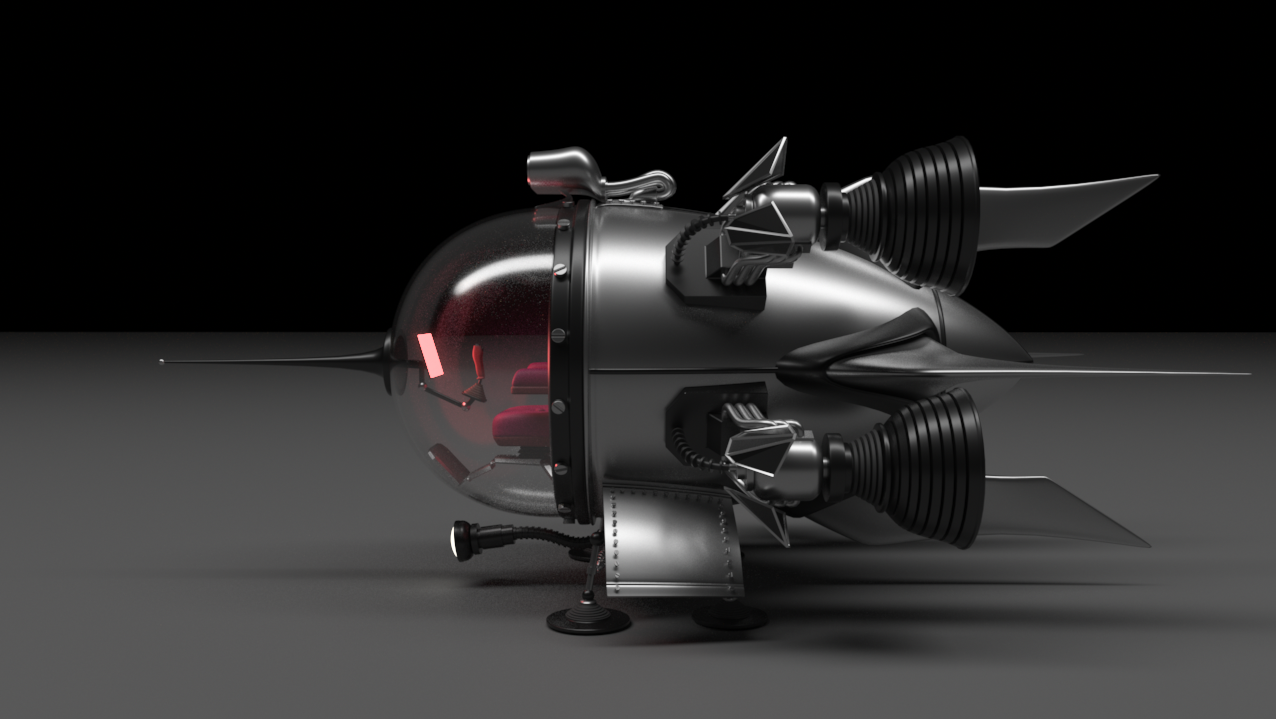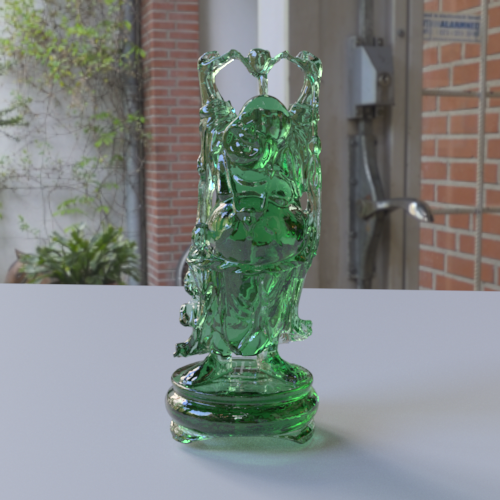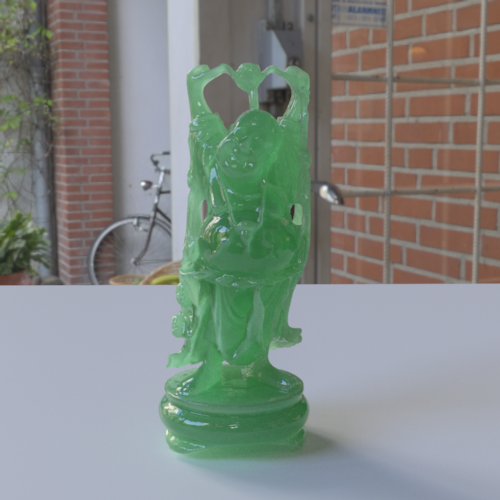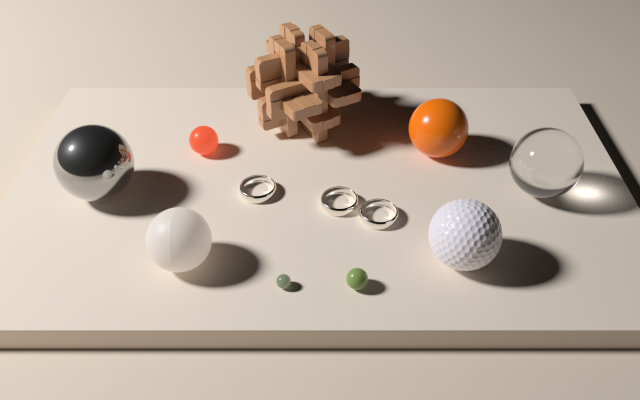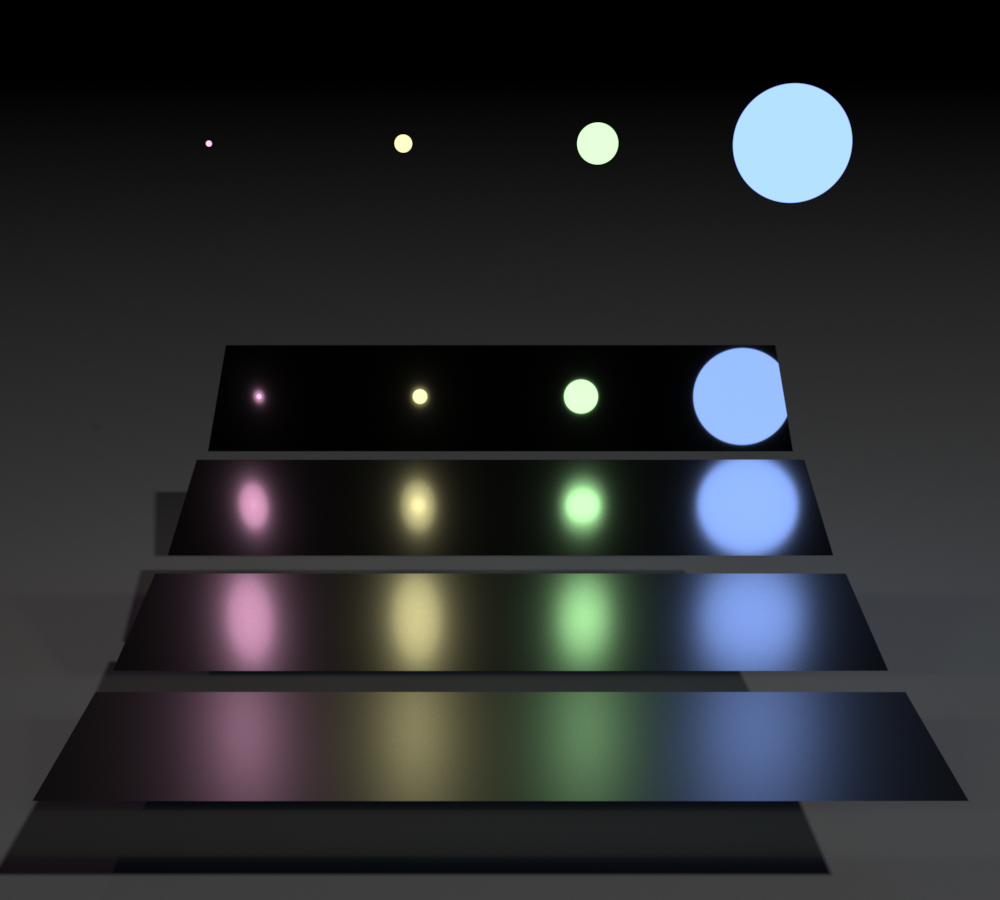A lightweight CPU/GPU path tracer focusing on speed and simplicity. It offers a single flexible BSDF based on Disney's physically principled BRDF extended to specular transmission / subsurface scattering.
- Uni-directional forward path tracer
- BSDF based on Disney's BRDF with specular transmission / thin-shell subsurface scattering
- HDR environment light probes
- Multiple importance sampling of BSDF / probes / area lights
- CPU or GPU tracing and shading
- Interactive OpenGL progressive mode
- Affine and deformable motion blur
- Gaussian and box reconstruction filters
- Instanced triangle mesh primitives
- AABB tree with SAH and various splitting heuristics
- Batch mode for animation rendering
- Simple scene description .tin format
- Windows / macOS / Linux support
- Wavefront tracing mode
- Non-Local Means noise filtering
- Tungsten scene loader
Instancing test (palette courtesy of https://twitter.com/paniq)
Ajax bust in gold (courtesy http://forum.jotero.com)
Ajax bust in plaster (courtesy http://forum.jotero.com)
Spaceship model courtesy of Benedikt Bitterli (https://benedikt-bitterli.me/resources)
Coffee maker model courtesy of Benedikt Bitterli (https://benedikt-bitterli.me/resources/)
Glass Buddha with specular transmission (courtesy Stanford 3D Scanning Respository http://graphics.stanford.edu/data/3Dscanrep/)
Jade Buddha with sub-surface scattering (courtesy Stanford 3D Scanning Respository http://graphics.stanford.edu/data/3Dscanrep/)
Recreation of the Disney Hyperion test scene, https://www.disneyanimation.com/technology/innovations/hyperion.
Recreation of Eric Veach's multiple importance sampling test
The scene description in Tinsel is very simple, and loosely based off Arnold's .ass format, here is an example:
# This is a comment
material gold
{
color 1.0 0.71 0.29
roughness 0.2
metallic 1.0
}
material plaster
{
color 0.94 0.94 0.94
roughness 0.5
specular 0.1
}
material light
{
emission 5.0 5.0 5.0
}
primitive
{
type plane
plane 0 1 0 0
material plaster
}
primitive
{
type sphere
radius 0.5
material light
position 0.0 10.0 0.0
rotation 0.0 0.0 0.0 1.0
scale 1.0
}
primitive
{
type mesh
mesh octopus.obj
material gold
position 0.0 0.0 0.0
rotation 0.0 0.0 0.0 1.0
scale 2.0
}
Single Image:
tinsel -spp 100 scene.tin output.png
To convert an animation sequence, e.g.: frame_1.tin, frame_2.tin, ... use the following syntax:
tinsel -spp 100 frame_%d.tin
- Multiple importance sampling
- Mesh affine transformation support
- Disc primitive
- Mesh sampling
- Multi material meshes or .obj conversion
- SAH and median split BVH build heuristics
- Clean up mesh allocations
- Command line interface
- Scene sky parameters
- Scene camera parameters
- Scene include files
- Scene camera definition
- Tone mapping
- Bloom filter
- Blackbody emitters
- Output formats
- Triangular noise dither
- NLM noise filter
- Point sets primitive
- Scene BVH
- FFmpeg encoding
- Reconstruction filter
- Correctness checks
- Volume rendering
- Environment maps
- Lens modelling
- Refraction
- Examples
Tinsel includes makefiles and Visual Studio projects for OSX and Windows respectively. Although not explicitly supported it should be relatively simple to build for Linux.
Tinsel is licensed under the ZLib license, see LICENSE.txt.
Miles Macklin - http://mmacklin.com
